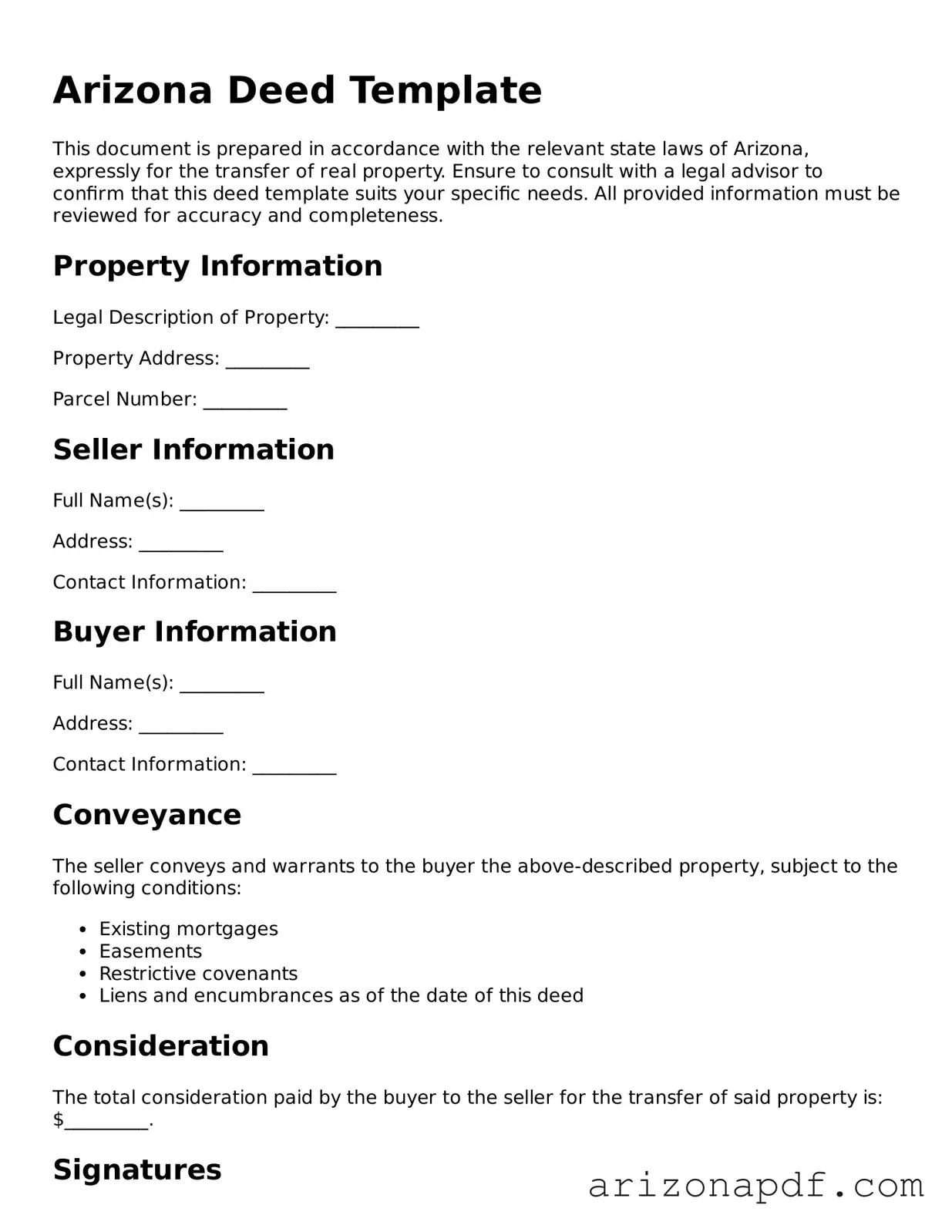What is an Arizona Deed form?
An Arizona Deed form is a legal document used to transfer property ownership in the state of Arizona. It contains details about the seller (grantor), the buyer (grantee), and the property being transferred. This form must be completed accurately and signed by the grantor to be valid.
What types of Deed forms are available in Arizona?
In Arizona, there are several types of Deed forms, including General Warranty Deeds, Special Warranty Deeds, Quitclaim Deeds, and Beneficiary Deeds. Each serves a different purpose and offers varying levels of warranty regarding the title of the property.
How can I ensure my Deed form is legally valid in Arizona?
To ensure your Deed form is legally valid in Arizona, it must be in writing, contain the signatures of the grantors, provide a legal description of the property, and be delivered to and accepted by the grantee. It must also be notarized and recorded with the county recorder's office where the property is located.
Do I need a lawyer to create a Deed form in Arizona?
While it's not legally required to have a lawyer create a Deed form in Arizona, it is highly recommended. A lawyer can ensure the Deed complies with all state laws and includes the necessary legal descriptions and terms to protect all parties involved.
What is the difference between a Warranty Deed and a Quitclaim Deed in Arizona?
A Warranty Deed guarantees that the grantor has the legal right to transfer the property and that it is free from any liens or encumbrances. A Quitclaim Deed, on the other hand, transfers any ownership the grantor may have in the property without any guarantees or warranties about the title.
How do I record a Deed in Arizona?
To record a Deed in Arizona, the document must be brought or sent to the county recorder's office in the county where the property is located. It must be accompanied by the appropriate recording fees. Recording the Deed makes it part of the public record and protects the grantee's interest in the property.
Are there any fees associated with recording a Deed in Arizona?
Yes, there are fees associated with recording a Deet in Arizona. The fees vary by county and the number of pages in the Deed. It's best to contact the local county recorder's office for current fee information.
Can I change a Deed once it has been recorded in Arizona?
Once a Deed has been recorded in Arizona, it cannot be altered or changed. However, if changes are needed, a new Deed must be prepared, signed, and recorded that reflects the correct information or transfers the property based on the updated terms.
What happens if I lose my recorded Deed in Arizona?
If you lose your recorded Deed in Arizona, you can obtain a copy from the county recorder's office where the Deed was recorded. This copy will serve as official proof of property ownership.
Do Deed forms in Arizona require witness signatures?
Arizona law does not require witness signatures for a Deed to be valid. However, the Deed must be notarized, which involves a notary public witnessing the signing of the document by the grantor(s).
